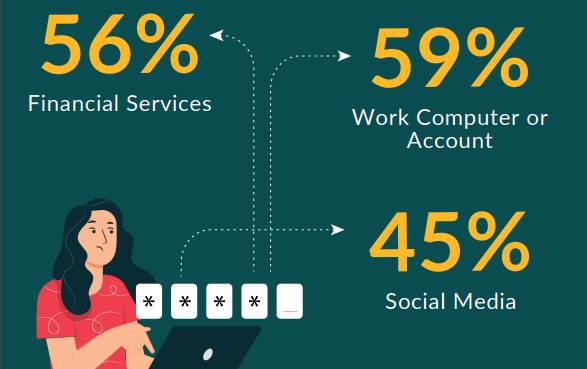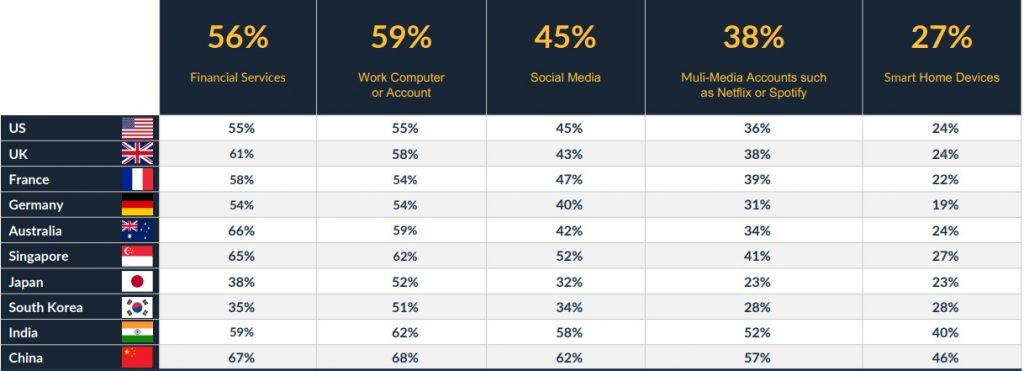Passwords and other knowledge-based approaches such as OTPs have historically dominated online authentication and the barometer confirms this is still the case.

However, major platform and device manufacturers including Apple, Google and Microsoft have begun adopting possession-based, passwordless alternatives into their core product offerings to improve security and convenience.

As these and other initiatives gain traction, the world’s reliance upon passwords and other server-side “secrets” is expected to decrease in favour of modern solutions including biometrics, security keys and other on-device approaches for user authentication.
Biometrics adoption
The Online Authentication Barometer report tracks the uptake of secure authentication technologies among the public. It provides baseline insights into the state of online authentication in 10 countries across the globe, including six in Asia-Pacific, with future releases of the barometer able to compare changes in behaviours and attitudes over time.
The report, published by the FIDO Alliance, revealed that biometrics, such as using fingerprints and face scans, are being used by at least 40% of people and are by far the most popular form of online authentication, second only to passwords.
It highlights how the adoption of biometrics for online authentication varies widely internationally, yet all countries surveyed reported at least 25% of the population are using biometrics in some capacity.
Biometrics is the most popular of these possession-based and password-free authentication options, and data from the barometer reveals why.
Over three in 10 respondents in Asia-Pacific perceived biometrics to be the most secure way for people to verify their identity online, aligning with the trend worldwide. It was also the most popular method of logging in to their online accounts, apps, and smart devices, accounting for 29% of people surveyed.

“Time and time again we see data breaches, ransomware and other attacks that leverage vulnerabilities associated with passwords and other ‘what you know’ forms of authentication -- including OTPs as a second factor,” said Andrew Shikiar, executive director & CMO of the FIDO Alliance.
He suggested that the industry must shift towards possession-based factors such as biometrics and security keys that are not susceptible to remote attacks such as phishing, credential stuffing and various forms of social engineering that frankly are difficult if not impossible for the average user to detect.
Password use in Asia-Pacific
The Online Authentication Barometer also found encouraging data on people actively taking steps to protect their accounts from being hacked or compromised.
84% of surveyed people in Asia-Pacific acted, suggesting high levels of awareness on the security issues passwords have.
However, despite biometrics being recognized for better security, 18% of Asia Pacific respondents still consider passwords to be the most secure way to authenticate themselves online, and 13% believe SMS OTPs are the most secure.
This was ahead of some of the strongest methods available today, including authentication software (8%) and physical security keys (4%).
Of the 15% who didn’t take any steps to improve their online security, the majority said they didn’t know how (38%), with 27% saying it’s too complicated and 18% believe a data breach or hack would not happen to them.





